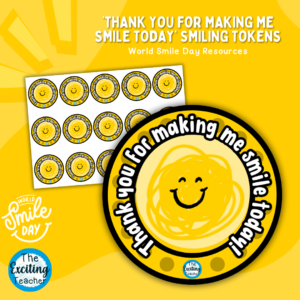Facial Expressions Emotions/Feelings Matching Activity

‘Facial Expressions Emotions and Feelings Matching Activity Cards’ – With this activity, children are presented with different facial expressions and asked to match them with their corresponding feelings or emotions.
This activity helps to develop children’s recognition and response to different facial expressions, which is essential to effective communication and social interaction. Children can learn to interpret nonverbal cues and begin to recognise a variety of emotions.
This activity can be used in a variety of ways to support building children’s emotional literacy and emotions understanding.
This activity is also the perfect therapy resource for EMHPs, CWPs and ELSAs to use in their 1:1 sessions.
How can this resource be used?
- To support emotional literacy and identifying different emotions.
- To support a child 1:1.
- The perfect addition to tuff tray set ups and continuous provision.
Relevant Curriculum Links:
England PSHE – Which statutory PSHE curriculum* objectives does this resource fall into? *in line with the PSHE Association 2021 Statutory Guidance.
KS1:
- H11. about different feelings that humans can experience.
- H12. how to recognise and name different feelings.
- H15. to recognise that not everyone feels the same at the same time, or feels the same about the same things.
- H18. different things they can do to manage big feelings, to help calm themselves down and/or change their mood when they don’t feel good.
- H19. to recognise when they need help with feelings; that it is important to ask for help with feelings; and how to ask for it.
KS2:
- H17. to recognise that feelings can change over time and range in intensity.
- H18. about everyday things that affect feelings and the importance of expressing feelings.
- H19. a varied vocabulary to use when talking about feelings; about how to express feelings in different ways.
- H21. to recognise warning signs about mental health and wellbeing and how to seek support for themselves and others.
Scottish Health and Wellbeing Curriculum Outcome(s):
- Mental and Emotional Wellbeing:
- I am aware of and able to express my feelings and am developing the ability to talk about them. HWB 0-01a / HWB 1-01a / HWB 2-01a / HWB 3-01a / HWB 4-01a.
More amazing resources you might like:
- All
- Arts and Crafts
- Bullying and Anti-Bullying
- Christmas
- Conflict Resolution
- EYFS
- Emotional Literacy
- Emotional Regulation
- Happy Scribble
- KS1
- KS2
- Let's Journal
- Managing Hurtful Behaviour and Bullying
- Mental Health
- Mindfulness
- Ourselves, Growing and Changing
- Physical Health
- Relationships
- SEND
- Self-Care and Wellbeing
- The Scribbles Crew
- Zones of Regulation

Peer Mediation Guide & Session Pack

World Smile Day: ‘Thank you for making me smile today!’ Smile Tokens

‘Identifying a Confidence Crew’: What is a Trusted Adult? (Lesson Pack)

Advent: ‘My Warm Festive Drink’ Mindfulness Activity

Breathing Techniques for Relaxation A4 Poster

Snakes and Ladders Germs Edition Boardgame

Feeling scared?

FREE World Book Day: My Comic Strip (Write Your Own Story)

Let’s Journal: ‘Observing Insects in Nature’ Journaling Prompt Sheet

What Are The Regulation Zones? (EYFS/KS1 Slideshow)
Share this resource:
Request a Resource
Want to request or suggest a resource? Pop us a message below and we will see what we can do. We are not able to respond directly to all requests but be rest assured, we are reading them and constantly updating the resource bank accordingly to all your fabulous ideas!
